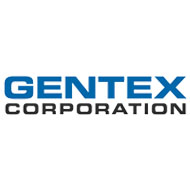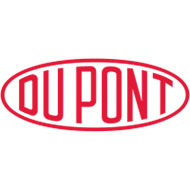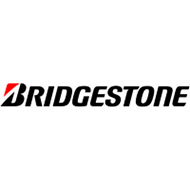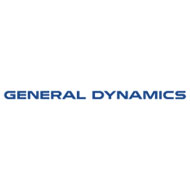Production-Oriented Solutions for Manufacturers and Distributors.
Electronic Data Interchange Software
Trusted & Affordable B2B and Automotive EDI Technology
Radley Solutions:
Your Competitive Edge
Customer demands, industry regulations and complex supply chains signal change for today’s manufacturers. To keep ahead of the curve, you can no longer rely on paper and manual processes. Radley can help you automate and streamline workflows. As a result, you can meet compliance demands while improving efficiency:
• Improve inventory accuracy
• Capture data from machines
• Automate labeling
• Drive labor efficiency
• Eliminate manual ASN and order entry
Supply chain efficiency and productivity is crucial to keeping your competitive edge. To meet this challenge, you need a flexible solution configured to your unique needs. With decades of computer software experience, Radley provides solutions for companies all over the world. From affordable EDI software to scalable manufacturing and WMS solutions, Radley delivers results.
Manufacturers face steep challenges to remain competitive. For example, changing consumer demands, industry regulations and emerging markets can impact profitability. All these factors lead to pressure to control costs and increase efficiency.
But finding manufacturing software solutions can be difficult. This is especially true for small manufacturers. They may still have the manual processes and disparate systems of the past. These systems lack the real-time visibility necessary to meet today’s challenges.
As a result, organizations face a balancing act. Which traditional production models should remain, and which new technologies should be added?
How Is ERP Useful for Manufacturers?
Enterprise Resource Planning (ERP) software promises to bridge the gap. Manufacturing ERP systems add connectivity to all facets of an organization. They can improve business processes, from inventory to production planning. Also, they may also provide management systems for accounting or marketing.
What is MRP? Why Is It Important for Businesses?
Likewise, Material Requirements Planning (MRP) software manages manufacturing processes. Specifically, an MRP can ensure availability of materials for production. Also, it helps maintain low inventory, and provide insights into manufacturing activities.
Functionality Gaps in ERP or MRP
Many manufacturers find that their ERP or MRP leaves critical gaps in functionality. For instance, they might be forced to follow pre-defined standard workflows. Also, built-in reporting and data collection may be inadequate for the company’s needs. Thus, they remain unable to implement necessary change throughout their manufacturing process.
As a result, many manufacturers turn to separate EDI, MES or WMS software solutions. Like ERP, these systems can automate processes, provide data, or streamline processes. But often with greater built-in functionality.
What Are the Benefits of EDI?
First, EDI—or electronic data interchange—is a computer-to-computer exchange of business documents. These might include advanced ship notices (ASN), invoices or purchase orders. With EDI the documents are automatically sent and received between trading partners.
For many small businesses, EDI is often mandated by a large customer. This is usually because manual processes are slow and error-prone. An EDI solution helps both parties increase efficiency and productivity. Also, eliminating paper processes reduces costs and enhances customer service.
How Are Manufacturing Execution Systems Used?
Next, a Manufacturing Execution System (MES) tracks and documents the production process. This can lead to significant productivity gains. For instance, MES can analyze production orders, capture plant floor activity, or help with order management.
Shop floor control functionality can result in reduced waste, re-work and scrap. Also, automated processes and streamlined workflows can save labor time. Plus, machine monitoring can boost overall equipment effectiveness (OEE).
What Is a Warehouse Management System?
Finally, a Warehouse Management System (WMS) allows a company to control warehouse operations. These might include inventory management or picking and shipping processes.
When combined with data collection hardware, a WMS reduces manual data entry. Plus, the management software produces detailed reports to track costs.
In addition, automated pick-lists and directed put-away within a WMS increase worker efficiency. And inventory visibility can reduce costs by controlling loss, and eliminating over-or under-ordering.
Stand-Alone vs. Integrated Manufacturing Software
Each of these solutions may be used as stand-alone systems. It’s true that separate systems provide needed functionality. But, it may be difficult to manage collecting and storing data in many databases.
In contrast, some EDI, MES or WMS solutions can integrate to an ERP or MRP. This creates a single system of record.
Still, a full MES or WMS may be overkill for some manufacturers. Perhaps the company doesn’t have an ERP. Or some companies only need added functionality in inventory control or labor tracking.
In that case, scalable software solutions like those from Radley Corporation, provide flexibility. At the same time scalable solutions allow options for future growth.
At any rate, the right productivity software vendor is key to ensuring a successful implementation. This is true regardless of which software solution fits your needs.
Look for an experienced partner who can provide a complete solution. Try to use one vendor for consultation, software, hardware, implementation, training and support. This makes implementation seamless and simplifies support after install.
Also, ask about their experience working with companies like yours. Finally, make sure they provide an upfront statement of work. This ensures you can avoid any surprises during implementation.


















